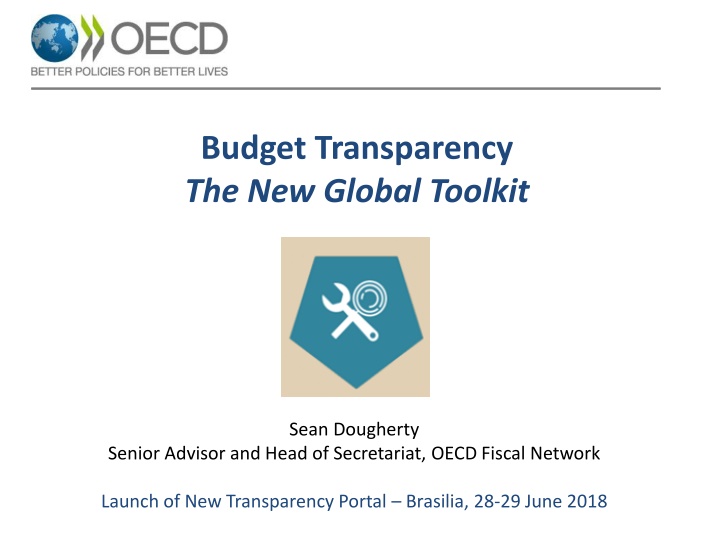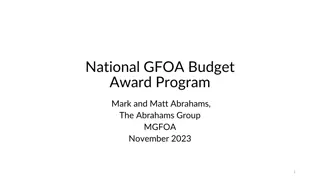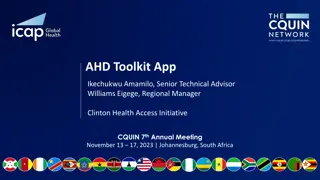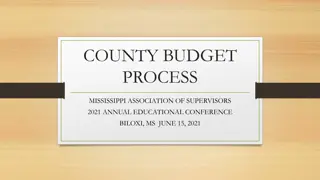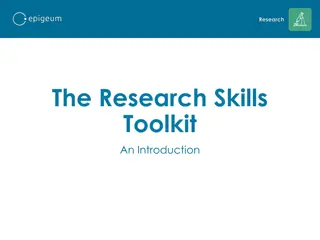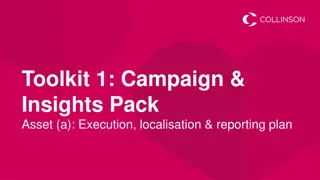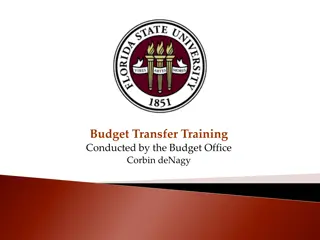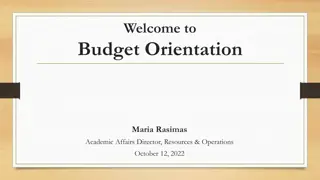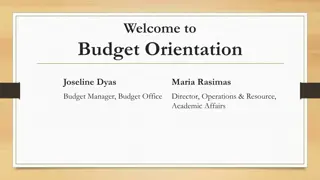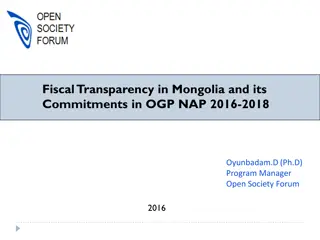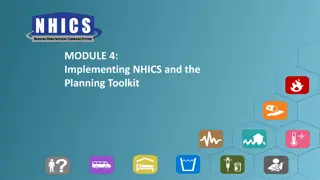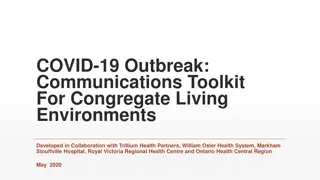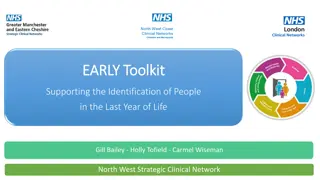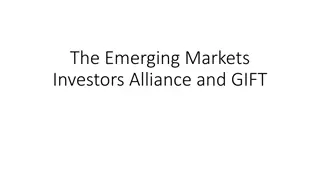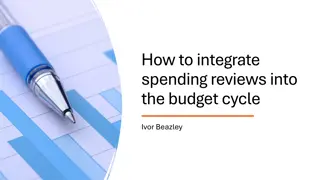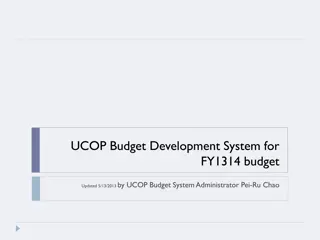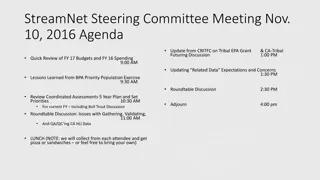Enhancing Budget Transparency: A Global Toolkit Overview
Explore the importance of budget transparency, from simple concepts to complex dimensions like revenues, expenditures, and performance. Discover the role of official standards and guidance, and learn about the useful roles of a toolkit in assessing and implementing transparency reforms. Delve into five institutional spheres benefiting from enhanced budget transparency efforts, such as parliamentary engagement, public money management, and open data utilization for civic engagement.
Download Presentation

Please find below an Image/Link to download the presentation.
The content on the website is provided AS IS for your information and personal use only. It may not be sold, licensed, or shared on other websites without obtaining consent from the author.If you encounter any issues during the download, it is possible that the publisher has removed the file from their server.
You are allowed to download the files provided on this website for personal or commercial use, subject to the condition that they are used lawfully. All files are the property of their respective owners.
The content on the website is provided AS IS for your information and personal use only. It may not be sold, licensed, or shared on other websites without obtaining consent from the author.
E N D
Presentation Transcript
Budget Transparency The New Global Toolkit Sean Dougherty Senior Advisor and Head of Secretariat, OECD Fiscal Network Launch of New Transparency Portal Brasilia, 28-29 June 2018
Transparency a complex concept Of what? Revenues Expenditures Processes Plans Performance Risks To whom? Citizens Peers Int l bodies Markets For what? Trust Confidence Participation Better decisions Impacts
3 useful roles for a toolkit Provide a gateway to resources that are already available across the international community Help to self-assess level of budget transparency, and to plan and implement transparency-focused reforms Reinforce key messages by bringing together the insights of the international community of budget transparency In two parts, Part 1:
Part 2: five institutional spheres Benefiting from parliamentary engagement and scrutiny C Supporting parliamentary capacity D Parliamentary Involvement Management and internal control of public money E Providing useful budget reports during the annual cycle A Supporting the role of the Supreme Audit Institution F Including the right financial information in budget reports B Government Reporting Independent Oversight Designing effective Independent Fiscal Institutions G Budget Transparency Toolkit Opening up public contracting and procurement K Making the budget accessible to the public H Revenues and expenditures in resource endowments L Using open data to support budget transparency I Openness and Civic Engagement Infrastructure governance for integrity, VFM and transparency Interaction with the Private Sector M Making the budget more inclusive and participative J
Structure of Part 2 navigation Colours and icons for easy navigation within the document. Key points from institutional recommendations to highlight the relevance of the topic Overview of the chapters content with summaries and country examples
Some benefits of this approach? simple and user-friendly comprehensive coverage practical guidance to put transparency into practice Informal and easy-to-update Supports our collective efforts to promote the benefits of BUDGET TRANSPARENCY
New horizons in budget transparency? Are budgets yet fully transparent? IMPACTS -- income distribution -- gender equality -- climate FISCAL RISKS -- State corporations -- Long-term holes What are the different models and limits of participation? THIS IS PARLIAMENT S ROLE so get them more involved LET CITIZENS DECIDE ON PRIORITIES municipal model CSOs CAN MEDIATE CITIZENS CONCERNS Social partnership OPEN GOVERNMENT MEANS OPEN DATA let citizens and CSOs find their own way make their own paths Are budgets yet fully accessible? OPEN DATA -- Portals -- civil-society use and re-use
